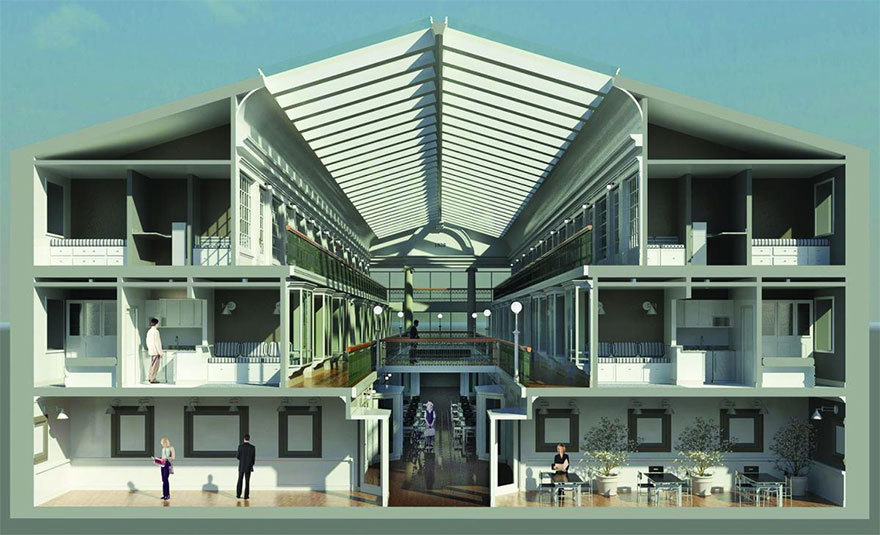- Shopping malls and retail centers are dead- or so they say.
- Although much of how we shop was put on pause by the COVID-19 pandemic, and we experienced the surge in e-commerce focused purchases, some of your favorite stores are faced with reimagining themselves in a new way.
- As the pressure for high-density housing continues to rise, and big-box centers and shopping malls are left empty, is there a way that the place where you once purchased a new outfit could be transformed into your next apartment?

© Collaborative Architects
The shift away from traditional in-person shopping models was already happening in a pre-pandemic world but was only accelerated over the last 15 months as people were forced to stay inside their homes and not spend the way they once did. Some real estate research firms are predicting that more than half of all major U.S. department stores in malls will have permanently shuttered by the end of 2021, with the smaller retail chains not so far behind. In terms of the closures that have made national headlines, Neiman Marcus, a luxury department store, recently closed its flagship location in the emerging Hudson Yards development in New York City. And popular stores like Gap, Nordstrom, and Forever 21 announced more store closures during the pandemic, significantly shrinking their real estate footprint and forcing thousands of store vacancies that only contribute to the heavily saturated retail market.
This decline in retail paired with the shortage experienced in the housing market has caused investors and developers to wonder if giving a new lease on life to these empty stores might be the solution- and some are already taking the risk and seeing the reward. Located in Providence, Rhode Island, the Arcade Providence was constructed in the early 1800s and is the oldest indoor mall in the nation. Over time, vacancies increased, and after an extensive renovation, it made news as it transformed into 48 micro-loft apartments on the top two floors of the building. The first floor houses small business retail, a restaurant, and a coffee shop. The success of this project introduced the possibility of using existing architecture and transforming it into a different use- and other designers and developers across the country took note.
Outside of Seattle, a new transformation is underway at the Alderwood Mall, but in a different way than the Arcade Providence. Instead of using vacant retail space as housing, they’ve begun to build 300 residential units around the outdoor mall, to give it a city-square feel, and to enhance the shopping experience while also providing a sense of community. When the project is complete in 2022, it’s expected to draw in new renters and help revitalize the retail scene. Many tenants will still remain, but instead of big-box stores serving as the mall anchors, residential complexes will take on that new role.


via The Arcade Providence
Even beyond turning malls into apartments, there’s a bigger lesson to be learned. Converting vacant real estate into something that’s needed both short or long-term is maybe our best solution. New construction can’t keep up with the rates at which we need more space, so why not use what’s already existing?
Author: Kaley Overstreet
This article was first published in Arch Daily and is republished with permission.








